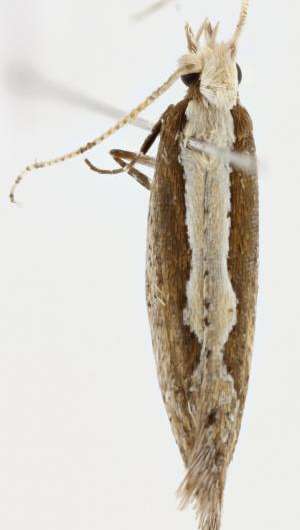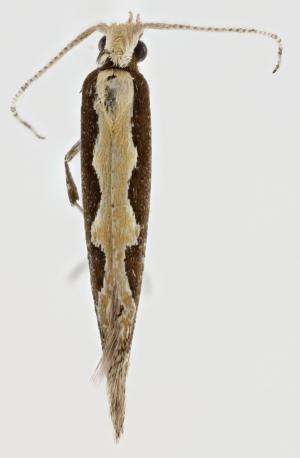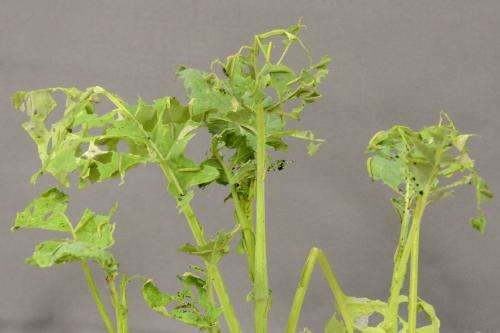Discovering a diamondback moth: Overlooked diversity in a global pest

The tiny diamondback moth (scientific name: Plutella xylostella) gets its common name from the array of diamond shapes along the margin of its forewing. Despite their diminutive size, the caterpillars of the diamondback moth exert tremendous damage on many crops including cabbage, broccoli, and crucifers at large. More than $1 billion is spent globally each year in efforts to control damage by this moth, reflecting its amazing capacity to evolve resistance to both insecticides and biological control agents.
A global study of DNA barcodes by two Canadian entomologists revealed unexpected complexity: the occurrence of two distinct species among Australian diamondback moths. One of them is the well-known diamondback pest which is found nearly everywhere. The other is a new species, named Plutella australiana by Dr. Jean-François Landry of the Canadian National Collection in Ottawa and Dr. Paul Hebert of the University of Guelph, Ontario, the authors of the study. Their results have been published in the open access journal ZooKeys. The new species has so far been found only in Australia, where it occurs together with typical Plutella xylostella.
The new species was initially detected by Dr. Hebert in a general survey of Australian moths aimed at developing a library of DNA barcodes representing all the species of the fauna. Subsequent study of the anatomy revealed significant, previously unsuspected, differences in internal reproductive organs between typical diamondbacks and the new species.
DNA barcodes are short fragments of DNA used to identify organisms. They provide genetic traits that complement traditional morphology/anatomy. DNA barcoding is increasingly used in applications to identify species, especially cryptic organisms.
-

This is a male Plutella xylostella, the typical diamondback moth. Size is 8 mm. Credit: Jean-François Landry -

This image illustrates the damage done by diamondback larvae to a canola plant. Credit: Andrea Brauner
Although the new species of diamondback moth has now gained recognition and a name, key aspects of its biology remain uncertain. For example, what is its role as a crop pest in Australia and does it pose a threat to agriculture?
More information: Landry J-F, Hebert PDN (2013) Plutella australiana (Lepidoptera, Plutellidae), an overlooked diamondback moth revealed by DNA barcodes. ZooKeys 327: 43–63. DOI: 10.3897/zookeys.327.5831
Journal information: ZooKeys
Provided by Pensoft Publishers
















